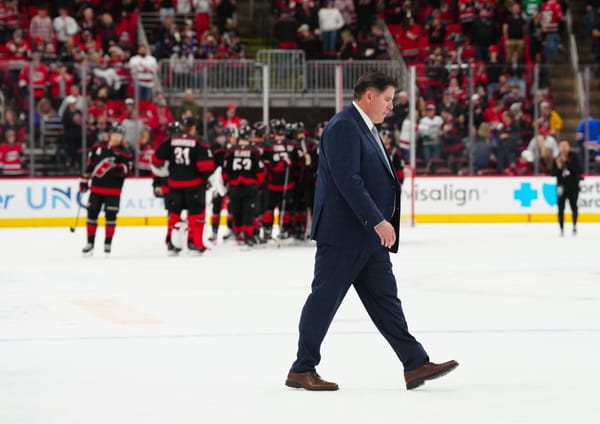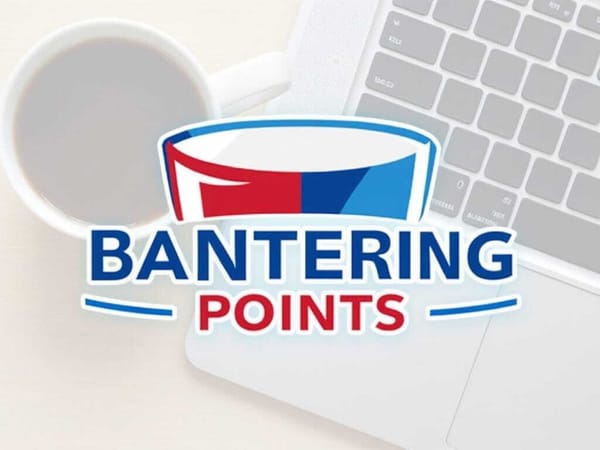Book Review: Sean Avery’s Trials and Triumphs Throughout the Hockey World and Beyond
Sean Avery was one of the NHL’s most infamous players during the decade he spent in the league. Over the course of his 608 NHL games, Avery managed to hit, chirp, and agitate his way to becoming public enemy #1 for 29 of the league’s then-30 teams on a nightly basis. As the one fan base he was embraced by during his time in hockey, Rangers fans usually remember Avery for some of his better moments. His four point night against the Dallas Stars after getting run out of town (which surprisingly isn’t so much as mentioned within the book) by them serves as one of those moments, as was his rivalry with St. Louis Blues assistant GM Martin Brodeur during his playing days.
The book’s formal title is Ice Capades: A Memoir of Fast Living and Tough Hockey, and it spends plenty of time recounting Avery’s time at all of his stops throughout professional hockey. It begins with Avery’s despair of going undrafted in his final year of eligibility in 2001, and he parlayed a connection with Kris Draper into an invitation to camp with the Detroit Red Wings.
The Detroit portion of the book is primarily focused on his on-ice attempts to establish himself as an NHLer, with nuggets of noteworthy off-ice events sprinkled throughout. Most of those stories would become the origins of recurring themes later in the book, with Avery’s relationships with Brendan Shanahan, Brett Hull, and Chris Chelios playing key roles later on. With those three future Hall of Famers on the roster, (along with seven others plus Scotty Bowman) the 2001-02 Red Wings were arguably the most stacked team since the days of Montreal’s dynasty. Avery’s attempts to crack their roster went about as well as one could expect, and he was shipped to the Los Angeles Kings the following season.
His transition to LA coincides with a change in the book’s narrative, as well as the narrative surrounding the player. Avery recounts later that Ken Holland was okay with moving on from him due to his “lack of respect for people of the game” and the game itself, which Avery would become notorious for during his later years. The shift to the West Coast also presented Avery with his pick of the litter of prestigious night clubs, high-class housing, and everything you could ask for in the hopes of living a more glamorous lifestyle.
Avery makes it a point to let the reader know that all it took was one phone call away from waltzing into any late night entertainment he felt like. The Lakers might’ve been less than two years removed from a three-peat as NBA Champions, and the laundry list of Hollywood celebrities were always in town looking for things to do, but being a depth player on the city’s most irrelevant sports team was how you really got connected in that town a decade and a half ago.
Aside from his first infamous remark concerning another NHL player, Avery’s time in Los Angeles was relatively uneventful from a hockey perspective. He came, he had a sojourn in Finland and the USHL in Detroit during the lockout (of which he gives a lot of insight on regarding the factions of the Player’s Association and how negotiations failed) mocked his then-coach by scoring a goal and celebrating with some push-ups, and got suspended by the team before moving on:
The Rangers acquired Avery on February 5th, 2007, went 17-6-6 down the stretch, and carried their momentum into the Stanley Cup Playoffs, sweeping the #3 seeded Atlanta Thrashers before falling to the Presidents Trophy-winning Buffalo Sabres. Although falling short in Game 6 meant his season was over, Avery was at peace with his play, and was excited about exploring his off-ice interests and attending the Met Ball on what would have been the night of Game 7.
The 2007-08 season played out with Avery and the Rangers in a familiar spot. The team was knocked out in the Conference Semi-Finals, Avery was up for a new contract once again, and the player looked to his non-hockey interests in order to spice up his summer, as Avery interned at Vouge over the summer.
The summer also saw him leave New York and sign a $15.6 million contract with the Dallas Stars. Former Red Wings’ teammate Brett Hull had gone on to become the Stars’ general manager, and the Golden Brett brought Avery to Dallas based on their past relationship. In spite of skating in only 23 games for the Stars, Avery’s time in the Lone Star State featured his most infamous moment in the league. His comments concerning Elisha Cuthbert and Dion Phaneuf punched his ticket out of Dallas, and Avery found himself back where he wanted to be towards the end of the 2008-2009 season.
Avery’s time brief stint in Dallas and both of his tours with the Rangers were filled with interesting nuggets about the team’s players, management, and coaching staff. Some of the most interesting ones were as follows:
- Brendan Shanahan had the ear of Glen Sather during his time in New York, and planted the first seed with Sather that led to Avery’s acquisition in 2007.
- When his arbitration hearing came along in 2007, Avery sent a copy of the Rangers’ filing to Larry Brooks, who turned around and wrote a column slamming New York’s attempted penny pinching. Turns out the Rangers’ use of Brooks as a mouthpiece cuts both ways.
- As much as everybody in Dallas hated Sean Avery, Avery hated Dallas as soon as the ink dried on his contract.
- For all the the disdain he had towards John Tortorella (as well as confirming Marian Gaborik’s mutual feeling), Avery speaks highly of Sather and the team’s beat writers throughout both of his tenures on Broadway.
- Fan favorite enforcer Donald Brashear had very, very, very bad breath, and would bring his Great Dane into the team showers to wash it on occasion.
- The Rangers had a trade lined up with the Calgary Flames to send Avery out west at the conclusion of training camp 2011, but he opted to accept his demotion to Hartford and work his way back to New York./
From a content standpoint, the book was pretty evenly split between the grind of Avery’s life in hockey and his off-ice endeavors. The sections dedicated to Avery’s extravagant night-life, detailed accounts of his past relationships, and forays into the world of fashion and entrepreneurship weren’t ones I particularly enjoyed reading, but someone with a more diverse range of interests would find them intriguing. The peek into Avery’s time as a Red Wing was especially enlightening, as his stint in the Motor City is more or less forgotten by people reminiscing on his career, and he left the Red Wings’ organization with more memorable stories than any other stop in his career.
There were some structural writing issues, where the book would be talking about one issue, segway away from that issue to discuss something completely unrelated, and transition back to the original issue. Avery will be discussing something he did in a game for a handful of paragraphs, then dedicate a couple of random sentences discussing his Corsi rating, before going back to discussing the game. Issues like this cropped up on occasion, but not enough to make it a less enjoyable reading experience.
Sean Avery’s memoir is everything anyone who knew about Avery could expect: He talks positively about his journey to becoming a pro in the NHL and the people who helped him, he slung mud at several people who weren’t quite helpful, and he raved about the off-ice endeavors that made him a regular on Page Six. The portions not focused on his hockey career were a slog to read, but the on-ice portions of the book make it a worthwhile read for any hockey fan.





